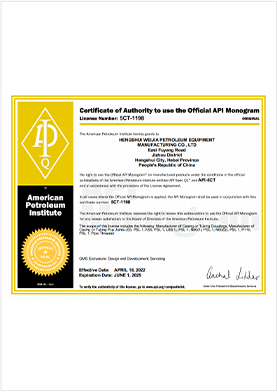- Afrikaans
- Albanian
- Amharic
- Arabic
- Armenian
- Azerbaijani
- Basque
- Belarusian
- Bengali
- Bosnian
- Bulgarian
- Catalan
- Cebuano
- Corsican
- Croatian
- Czech
- Danish
- Dutch
- English
- Esperanto
- Estonian
- Finnish
- French
- Frisian
- Galician
- Georgian
- German
- Greek
- Gujarati
- Haitian Creole
- hausa
- hawaiian
- Hebrew
- Hindi
- Miao
- Hungarian
- Icelandic
- igbo
- Indonesian
- irish
- Italian
- Japanese
- Javanese
- Kannada
- kazakh
- Khmer
- Rwandese
- Korean
- Kurdish
- Kyrgyz
- Lao
- Latin
- Latvian
- Lithuanian
- Luxembourgish
- Macedonian
- Malgashi
- Malay
- Malayalam
- Maltese
- Maori
- Marathi
- Mongolian
- Myanmar
- Nepali
- Norwegian
- Norwegian
- Occitan
- Pashto
- Persian
- Polish
- Portuguese
- Punjabi
- Romanian
- Russian
- Samoan
- Scottish Gaelic
- Serbian
- Sesotho
- Shona
- Sindhi
- Sinhala
- Slovak
- Slovenian
- Somali
- Spanish
- Sundanese
- Swahili
- Swedish
- Tagalog
- Tajik
- Tamil
- Tatar
- Telugu
- Thai
- Turkish
- Turkmen
- Ukrainian
- Urdu
- Uighur
- Uzbek
- Vietnamese
- Welsh
- Bantu
- Yiddish
- Yoruba
- Zulu
pup joint specifications
Understanding PUP Joint Specifications
The PUP joint, often referred to in various industries, particularly in oil and gas, construction, and mechanical engineering, plays a crucial role in connecting two segments of piping or tubing. Understanding its specifications is vital for ensuring the operational efficiency, safety, and longevity of systems. This article delves into the fundamental aspects of PUP joint specifications, including their types, material standards, design considerations, and applications.
Types of PUP Joints
PUP joints come in several configurations, each designed to suit specific applications. The most common types include
1. Straight PUP Joints These are utilized in situations where the piping needs to be extended. They maintain the same diameter as the adjoining pipes and are primarily used to adjust lengths.
2. Flanged PUP Joints These joints feature flanges at both ends, allowing for easy connection to other flanged pipes. They are often employed in systems where frequent disassembly is required for maintenance.
3. Threaded PUP Joints These joints have male and female threads at each end, facilitating easy assembly and disassembly without the need for welding. They are commonly used in lower-pressure applications.
4. Specialty PUP Joints These come with specific features such as bends, elbows, or even custom fittings designed to meet unique system requirements.
Material Standards
The materials used for PUP joints vary significantly based on the operational environment and the fluid being transported. Common materials include
- Carbon Steel Known for its strength and durability, carbon steel is often selected for its affordability and robustness. It is suitable for low to moderate temperature and pressure applications.
- Stainless Steel This material is corrosion-resistant, making it ideal for transporting corrosive fluids or working in hostile environments. Stainless steel PUP joints are often used in chemical processing and food industries.
- Alloys Various alloys, including nickel and titanium, are used in specialized PUP joints where higher resistance to temperature and corrosion is required.
It is essential to adhere to industry standards such as ASTM, ASME, and API when selecting materials for PUP joints to ensure safety and reliability.
pup joint specifications

Design Considerations
When designing a PUP joint, several factors must be considered to ensure its efficacy
- Pressure Rating PUP joints must be rated to withstand the maximum operating pressure of the system. It is crucial to consult pressure rating charts and select joints accordingly.
- Size and Dimensions The diameter and length of the PUP joint should match that of the connecting pipes. Custom dimensions may be required for specific applications.
- Temperature Resistance The materials selected must endure the operating temperature ranges without losing structural integrity or performance.
- End Connections The type of connection (flanged, threaded, or welded) should align with the overall piping system design, making it easy to integrate.
Applications
PUP joints are utilized in a wide range of applications
- Oil and Gas Industry PUP joints are imperative in pipeline systems for facilitating the transport of crude oil and natural gas. They help in managing changes in pipeline lengths due to thermal expansion.
- Construction In construction, PUP joints are used in plumbing and HVAC systems for maintaining proper flow directions and adapting to various structural designs.
- Chemical Processing These joints play a significant role in chemical plants, where they are employed to transport hazardous materials safely.
- Water and Wastewater Management In municipal water systems, PUP joints allow for flexibility in piping while accommodating pressure changes due to varying flow rates.
Conclusion
PUP joint specifications are critically important in a variety of industrial applications. From understanding the types and materials to recognizing the vital design considerations, ensuring that PUP joints meet specific operational requirements is paramount. By comprehensively examining these factors, engineers and designers can create safer, more efficient systems that withstand the rigors of their environments. Proper selection, installation, and maintenance of PUP joints will ultimately contribute to the overall efficacy and lifespan of piping systems across numerous industries.
-
Well Casing Extension Couplings – Applications and InstallationNewsJun.06,2025
-
Types of Crossover Subs in Drilling & CompletionNewsJun.06,2025
-
Key Features of High-Quality Tubing Pup JointsNewsJun.06,2025
-
Installation and Maintenance Tips for Steel Couplings for PipeNewsJun.06,2025
-
How to Select the Right Pup Joint for Oil & Gas OperationsNewsJun.06,2025
-
Applications of Stainless Steel Pipe CouplingsNewsJun.06,2025







